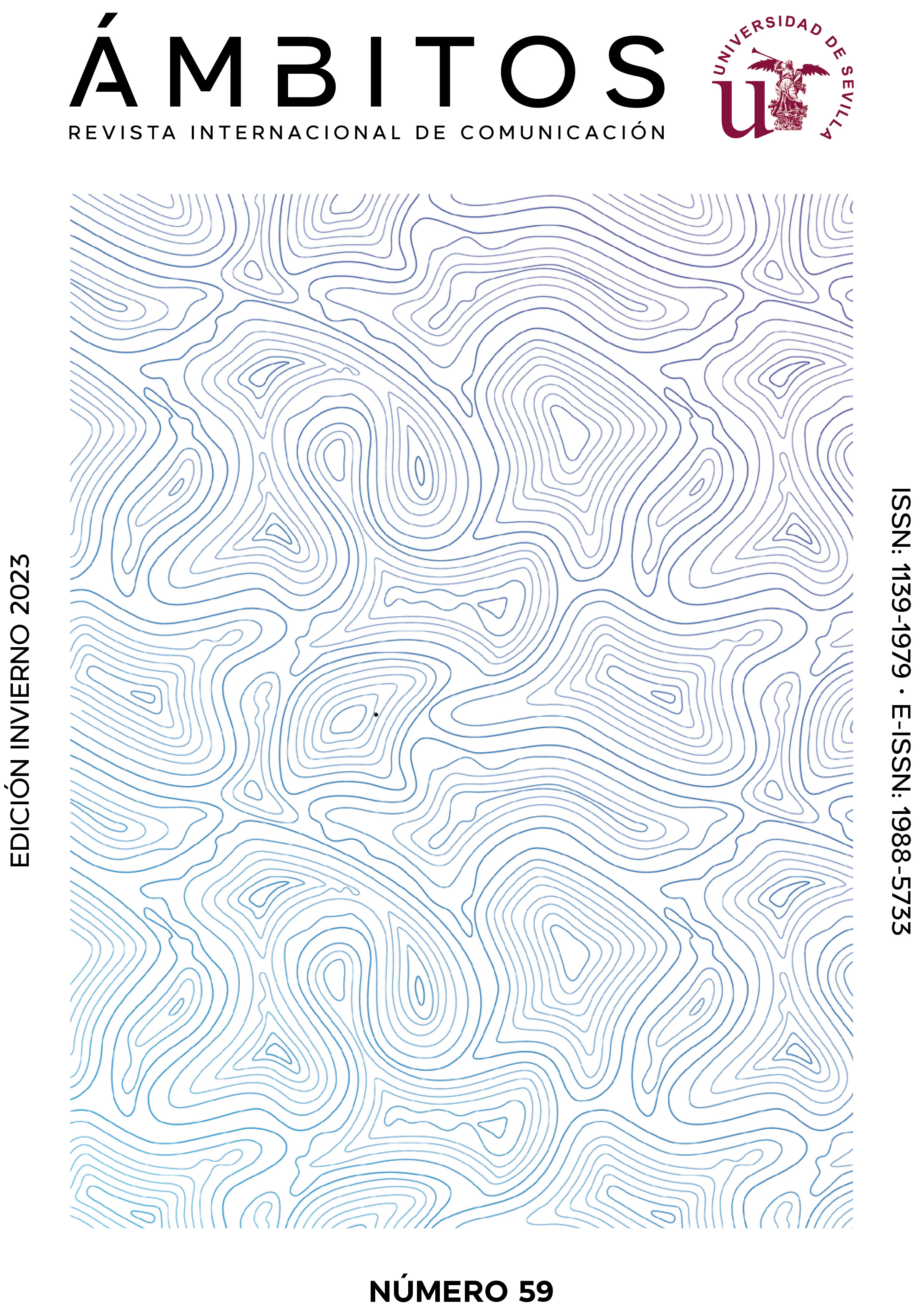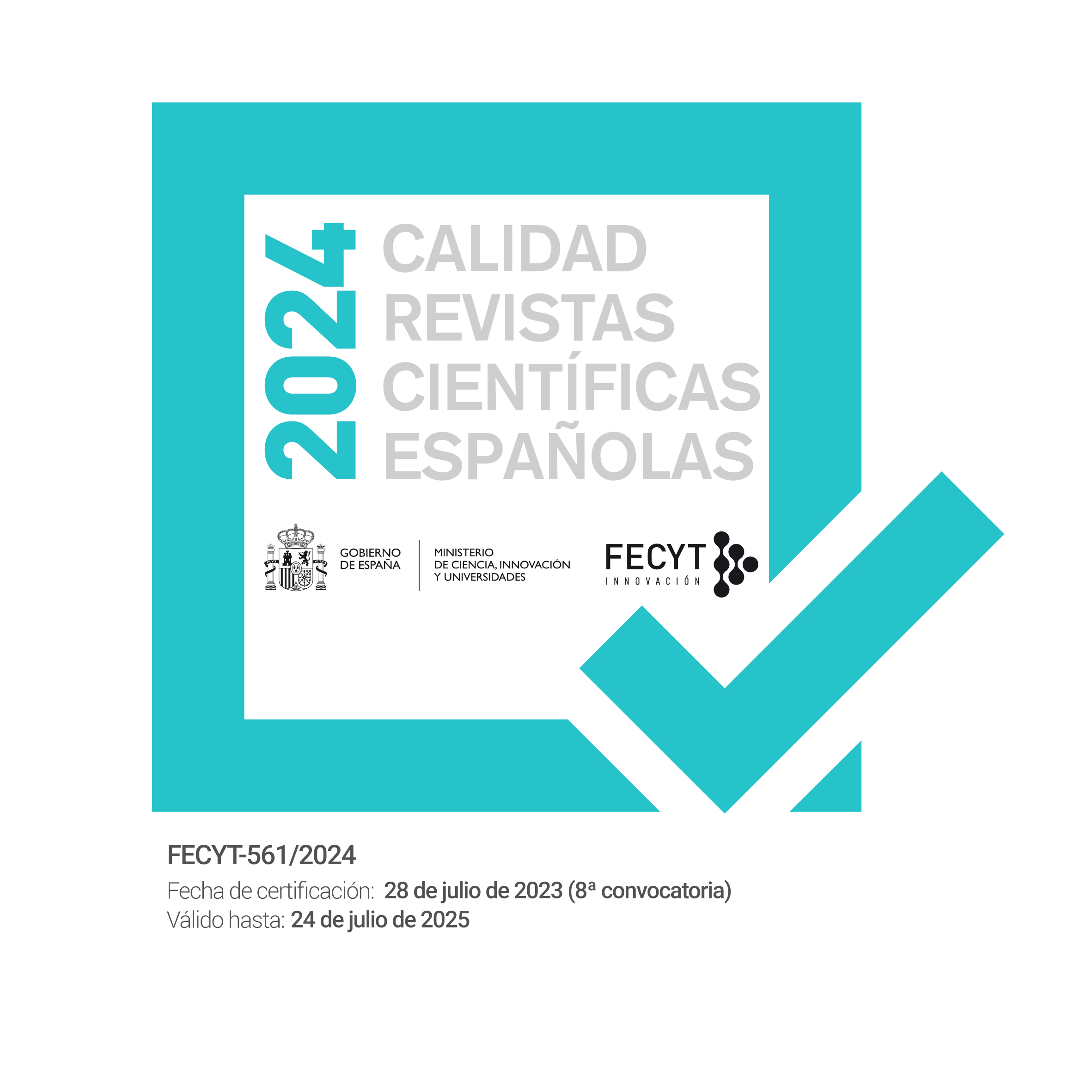Reflections of patriarchy in communication
DOI:
https://doi.org/10.12795/Ambitos.2023.i59.01Keywords:
patriarchy, communication, heteronormativity, micromachisms, symbolic violenceAbstract
This article analyses some issues in which the presumptions of patriarchy are still perceived in communication. Specifically, it focuses on the construction of gender identity in the model of patriarchal heteronormativity and the treatment of gender violence. A micromachist (instances of male chauvinism) gaze persists, illustrating the persistence of an inequality that has been filtered through the times of political correctness. Reversing these cultural inertias requires communicative creativity in order to highlight other ways of approaching the problems, with a broader vision than the episodic account of these events that allows us to reach the cultural roots of these problems. The media manage the symbolic wealth of gender identities in the social imaginary. We propose an integrating vision of equality that overcomes the hierarchical vision between the qualities associated with the masculine and the feminine in a common vital horizon of the human. This mutation of machismo in democratic times can be more difficult to detect and combat because it is integrated into social dynamics and is made invisible. This article reviews in four points these patriarchal reflexes in the communication realm that still persist today based on some cases and, in its conclusion, it exposes the failure of the patriarchal model of masculinity.
Downloads
References
Aparisi-Miralles, A. (2016). Discursos de género: el modelo de la igualdad en la diferencia. Arbor, 192 (778), 303-311.
https://doi.org/10.3989/arbor.2016.778n2006
Benhabib, S. y Cornell, D. (1990). Teoría Crítica y Teoría Feminista. Alfonso el Magnánim.
Benjamin, H. (1968). Il fenomeno transessuale. Rapporto scientifico sul transessualismo e sui cambiamenti di sesso. Astrolabio.
Bisogno, F. & Ronzon, F. (2007). Altri generi. Inversioni e variazioni di genere tra culture. Il Dito e la Luna.
Bonino, L. (1998). Desvelando los micromachismos en la vida conyugal. https://bit.ly/3V1ripi
Bourdieu, P. (1999). Razones prácticas. Sobre la teoría de la acción. Anagrama.
Butler, J. (1990). Gender Trouble: Feminism and the Subversion of Identity. Routledge.
Cazés, M. (2007). Edición crítica de obras feministas de François Poullain de la Barre. UNAM-CIICH.
Cavendish, M. (1655). Philosophical and Physical Opinions. J. Martin and J. Allestrye.
Goffman, E. (1976). Gender Advertisements. Harper and Row.
Goffman, E. (2012). La presentación de la persona en la vida cotidiana. Amorrortu.
Levitt, H.M. & Ippolito, M.R. (2014) Being Transgender: The Experience of Transgender Identity Development. Journal of Homosexuality, 61(12), 1727-1758.
https://doi.org/10.1080/00918369.2014.951262
Lingiardi, V. (2012). Scarti di genere: percorsi diagnostici, paesaggi uman. Educazione sentimentale, 18(2), 65-79.
https://doi.org/10.3280/EDS2012-018008
Molina, S. y Porras, L. (2011). Manual de Género para Periodistas. PNUD. https://bit.ly/3V7kYMU
Ruspini, E. (2003). Le identità di genere. Carocci.
Weber, M. y García, J. A. (2012). Sociología del poder: Los Tipos de Dominación. Alianza Editorial.
Downloads
Published
How to Cite
Issue
Section
License
Copyright (c) 2023 Juan Carlos Suárez Villegas, Sergio Marín-Conejo

This work is licensed under a Creative Commons Attribution-NonCommercial-ShareAlike 4.0 International License.
Ámbitos. Revista Internacional de Comunicación is an open access journal, which means that all content is freely available at no charge to the user or their institution. Users may read, download, copy, distribute, distribute, print, search or link to the full text of articles, or use them for any other lawful purpose, without seeking prior permission from the publisher or author. This definition of open access is in accordance with the Budapest Open Access Initiative (BOAI).

Unless otherwise noted, all content in the electronic edition is distributed under a "Creative Commons Attribution-NonCommercial-ShareAlike 4.0 International License". You can consult the informative version and legal text of the licence here. This should be expressly stated in this way where necessary.
In case of acceptance of the manuscript, the authors cede the rights of the work for its publication to Ámbitos. Revista Internacional de Comunicación under the Attribution-NonCommercial-ShareAlike 4.0 International license contract (CC BY-NC-SA 4.0). The authors retain copyright and third parties are authorised to copy, distribute and make use of the work, provided they comply with the terms and conditions set out in the licence
- Cite the authorship and the original source of publication (journal, publisher and URL of the work).
- Do not use them for commercial purposes.
- If you remix, transform or create from the material, you must release your contributions under the same license as the original.
More information can be found at https://creativecommons.org/licenses/by-nc-sa/4.0/deed.es


















